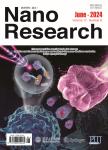Regulations of active moiety in single atom catalysts for electrochemical hydrogen evolution reaction
作者机构:Department of ChemistryTsinghua UniversityBeijing 100084China Powder Metallurgy Research Institute and State Key Laboratory of Powder MetallurgyCentral South UniversityChangsha 410083China
出 版 物:《Nano Research》 (纳米研究(英文版))
年 卷 期:2022年第15卷第7期
页 面:5792-5815页
核心收录:
学科分类:07[理学] 070304[理学-物理化学(含∶化学物理)] 0817[工学-化学工程与技术] 0703[理学-化学] 0702[理学-物理学]
基 金:the National Key Research and Development Program of China(No.2018YFA0702003) the National Natural Science Foundation of China(Nos.21890383 and 21871159) the Science and Technology Key Project of Guangdong Province of China(No.2020B010188002) China Postdoctoral Science Foundation(2021M691834).
主 题:single atom catalysts coordination environment electrocatalytic hydrogen evolution reaction
摘 要:Hydrogen production from water splitting using renewable electric energy is an interesting topic towards the carbon neutral future.Single atom catalysts(SACs)have emerged as a new frontier in the field of catalysis such as hydrogen evolution reaction(HER),owing to their intriguing properties like high activity and excellent chemical selectivity.The catalytic active moiety is often comprised of a single metal atom and its neighboring environment from the supports.Recent published reviews about electricdriven HER tend to classify these SACs by the species of active center atom,nevertheless the influence of their neighboring coordinated atoms from the supports is somehow neglected.Thus we classify the SACs for HER through the type of supports,highlighting the electronic metal–support interaction and their coordination environment from support.Then,we put forward some structural designing strategies including regulating of the central atoms,coordination environments,and metal-support interactions.Finally,the current challenges and future research perspectives of SACs for HER are briefly proposed.



